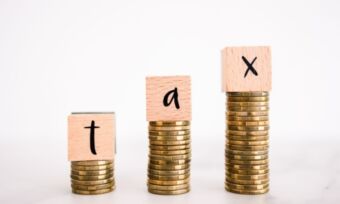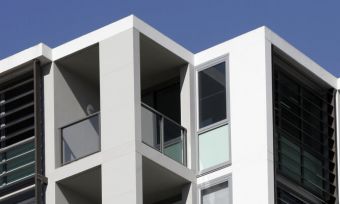Australia tax refund – 4 things to do before 30 June
There are some simple things you may be able to do ahead of 30 June to potentially boost your tax refund. Check them out.

There are some simple things you may be able to do ahead of 30 June to potentially boost your tax refund. Check them out.
The end of the financial year is looming, so now is a great time to start thinking about your tax return. And with Stage 3 tax cuts kicking in from 1 July, you may get more bang for buck on your deductions this financial year than you will next financial year. If your marginal tax rate will be lower in 2024-2025 then the value of each dollar claimed as a tax deduction will also be lower.
There are a number of things that you may be able to do between now and 30 June that could potentially help you maximise your tax refund. Here’s a look at four options to consider.
1. Get your paperwork in order
It’s a good time to start organising any paperwork you need to prepare your tax return. This may include bank statements, statements relating to investments in shares or ETFs, records from your investment property, and receipts for donations, medical expenses or work-related expenses.
If you have been working from home it’s also important to make sure you have everything you need to claim a deduction. It’s important to remember that the ATO made changes to the fixed-rate method for calculating deductions for working-from-home expenses.
You can now claim 67 cents for each hour you work from home (up from 52 cents) and this covers energy expenses (electricity and gas), phone usage (mobile and home), internet, stationery, and computer consumables. You can no longer claim a deduction for work-related phone, internet and stationery on top of the rate of 67 cents per hour.
You also need to keep a detailed record of the number of actual hours you work from home during the entire income year – a four-week representative diary is no longer enough. You also need “at least one record for each of the additional running expenses you incur that the rate per work hour includes,” says the ATO. “For example, if you incurred electricity and stationery expenses, keep one quarterly bill for your electricity expenses and one receipt for your stationery expenses.”
This is an area the ATO will be keeping a close eye on, so it’s vital to get it right.
2. Prepay expenses
One way to potentially boost your tax refund is to pay for any expenses that may attract a tax deduction before 30 June. Some examples include paying your income protection insurance premium, making a donation to charity, taking out a professional subscription or paying union fees.
If you’re unsure about what work-related expenses you can claim, check out the guides provided by the ATO for a range of occupations. The ATO points out that to claim a deduction for work-related expenses you must have spent the money and weren’t reimbursed and the expense must directly relate to earning your income. And, if your total claim for work-related expenses is more than $300, you must have written evidence to prove it (usually a receipt).
Be careful when it comes to the end of financial year sales. You might be tempted to buy a new laptop or printer thinking you’ll be able to claim an immediate deduction but it doesn’t work like that. If you spend more than $300 on an item it needs to be depreciated so you’ll barely get any benefit this financial year.
If you own an investment property, you may consider prepaying property-related expenses so that you can claim a deduction. This could include strata fees, insurance and pest control. And if your investment property is in need of repairs, now may be the time to get these done. This is another area the ATO will be watching.
“We often see landlords making mistakes when it comes to repairs and maintenance deductions on rental properties, so we’re keeping a close eye on this. This year, we’re particularly focused on claims that may have been inflated to offset increases in rental income to get a greater tax benefit,” warned ATO Assistant Commissioner Rob Thomson. “Performing general repairs and maintenance on your rental property can be claimed as an immediate deduction. However, expenses which are capital in nature (like initial repairs on a newly purchased property and any improvements during the time you hold the property) are not deductible as repairs or maintenance.”
You may also consider prepaying next year’s interest on your loan so that you can claim a deduction this year. In essence, this means you’re locking in your interest rate for the next year, so it’s important that you are getting a good rate if you are considering this option. You may also opt to prepay other property-related expenses so that you can claim a deduction.
3. Top up your super
There are a number of perks that may come with making a contribution to your super. If your spouse is not working or earning a low income you may consider making an after-tax contribution to their super before 30 June as you may be able to claim a tax offset. The maximum offset is $540 which you may be able to claim if you contribute $3,000 to your spouse’s super fund and their income is $37,000 or less. The tax offset amount reduces when your spouse’s income is greater than $37,000 and completely phases out when your spouse’s income reaches $40,000, according to the ATO.
Finally, you may be able to claim a tax deduction for any after-tax contributions you make to your super fund, which could potentially help you increase your tax refund. Just make sure you don’t go over the concessional contribution cap of $27,500. Keep in mind this figure includes your employer’s super guarantee contributions and any salary sacrifice contributions you’ve made.
Contact your super fund to find out how you can add money to your super – it can be as simple as using BPAY – and ask if they have a cut-off date.
You’ll need to complete a notice of intent form to let your super fund know you will be claiming a deduction and need to receive a reply from your super fund before you can lodge your tax return.
If you earn less than $58,445 and add money into your super fund then the government may also make a super co-contribution up to a maximum amount of $500. This might not boost your tax refund but it’s worth thinking about.
The co-contribution amount depends on your income and how much you contribute. To get the maximum co-contribution of $500 your income must be $43,445 or less and you need to make a contribution of $1,000. If your income is between $43,445 and $58,445, your maximum entitlement will reduce progressively as your income rises. The money needs to be in your super fund by 30 June to be eligible for a co-contribution for this financial year.
4. Manage your capital gains and losses
If you have sold any assets – whether that be property, shares or ETFs – and made a capital gain, you may want to take a look at your portfolio for any investments that are not performing well. One option is to sell that investment, therefore crystallising your losses, and using that loss to potentially offset some or all of the gain.
Of course, it’s important not to make a decision to sell any assets simply for tax purposes. Think about how the decision fits in with your overall investment strategy.
It’s also worth noting that you can’t just buy the shares you have sold for a loss again in July as this is likely to be considered a tax-avoidance strategy by the ATO.
Cover image source: azrin_aziri/Shutterstock.com







